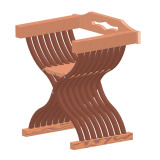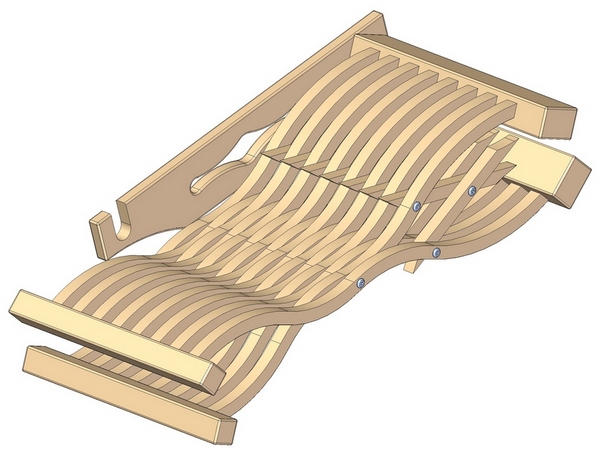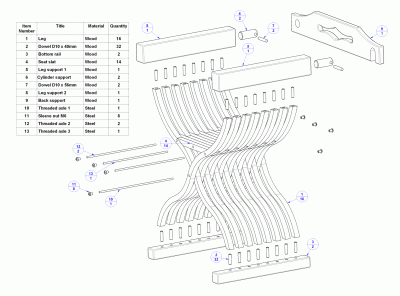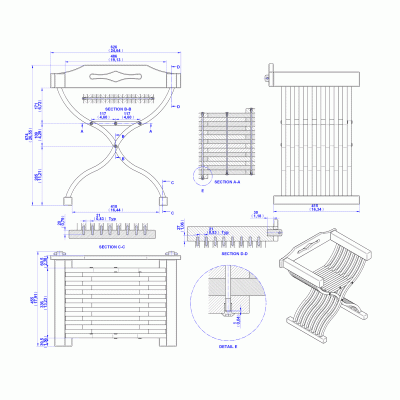On this page you are offered a plan for the making of a chair that looks very similar to the famous ‘curule armchair’ which used to be popular in Ancient Rome and during the Middle Ages.
The chair according to this plan is foldable, and for its making it is best to use a kind of nicely-textured hardwood. Since the making of this version of the above medieval armchair requires patience, experience and a lot of precision, it is not a project meant for woodworking beginners.

626 mm (24.64'') wide, 674 mm (26.55'') high and 455 mm (17.91'') long
- The hardest thing about this chair is to precisely craft the legs and drill holes in them. We recommend that you first draw a template that will serve you to copy the leg shape onto the board. Cut the leg with a jig saw and use sandpaper to smooth out the shape and get an even surface just like in the template. Let the template instruct you to drill all the holes in the leg, too.
- After you have completed the first leg, use it carefully to make all the others.
- Make a template (see picture) and use it to cut off the ends/tips of the legs under 45 degrees and drill holes.
- Make all the other necessary parts. Carefully mark and drill holes on the bottom rail parts/sections.
- After all of the pieces have been carefully made, dry-fit all parts, put the complete project together without glue to check for accuracy and good-fitting joints. If anything needs refitting, now is the time to correct it.
- If everything fits as it should, disassemble, then glue and clamp the components together.
- The finish is left up to you to choose.
Folded medieval chair

The making of this type of medieval chair requires a lot of your time and effort, but there is no doubt that its design is extremely beautiful and a true match to any interior dominated with wood. So, the time invested into it will surely pay off! Do not feel discouraged, especially when dealing with the side parts of the seat (the section beneath the arms) as they are closed and curved inward, which can be uncomfortable when heavier and larger persons are seated. In case your chair is meant for a bigger person, you have to adapt it to their size.


